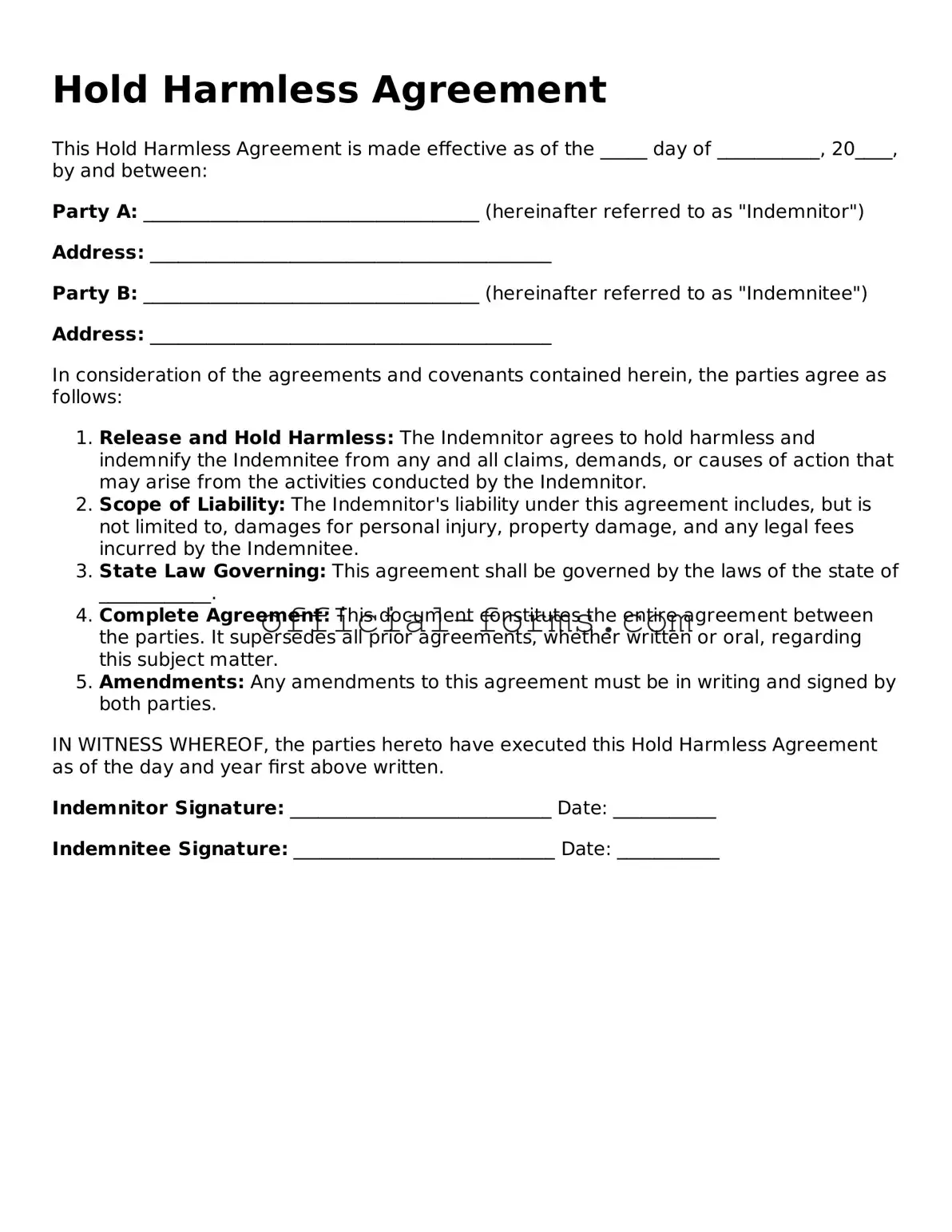Filling out a Hold Harmless Agreement can seem straightforward, but many people make common mistakes that can lead to confusion or legal issues later on. One frequent error is not reading the entire document before signing. This can result in misunderstandings about what rights are being waived or what responsibilities are being assumed.
Another mistake is failing to include all necessary parties. If the agreement is meant to protect multiple individuals or entities, each must be named clearly. Omitting someone can leave them unprotected and create complications if a dispute arises.
People often forget to specify the scope of the agreement. A vague description can lead to differing interpretations of what is covered. It’s essential to clearly outline the activities or situations that the Hold Harmless Agreement pertains to.
Inaccurate dates can also pose a problem. If the agreement is not dated correctly, it may raise questions about its validity. Always double-check that the date reflects when the agreement is being executed.
Another common mistake is neglecting to provide adequate consideration. This means that something of value should be exchanged as part of the agreement. Without this, the agreement may not hold up in court.
People sometimes sign the agreement without understanding its implications. It’s crucial to grasp what you are agreeing to. If there’s uncertainty, seeking clarification or legal advice can prevent future issues.
Additionally, failing to keep a copy of the signed agreement can lead to problems. Always retain a copy for your records. This ensures that you have access to the terms if needed later.
Some individuals overlook the need for witnesses or notarization. Depending on the jurisdiction, having a witness or a notary public may be required to make the agreement enforceable.
Another mistake is assuming that a Hold Harmless Agreement is a one-size-fits-all document. Each situation is unique, and it may be necessary to tailor the language to fit specific needs or circumstances.
Lastly, not updating the agreement when circumstances change can be a significant oversight. If the nature of the activities or the parties involved changes, revisiting and revising the agreement is essential to ensure ongoing protection.
